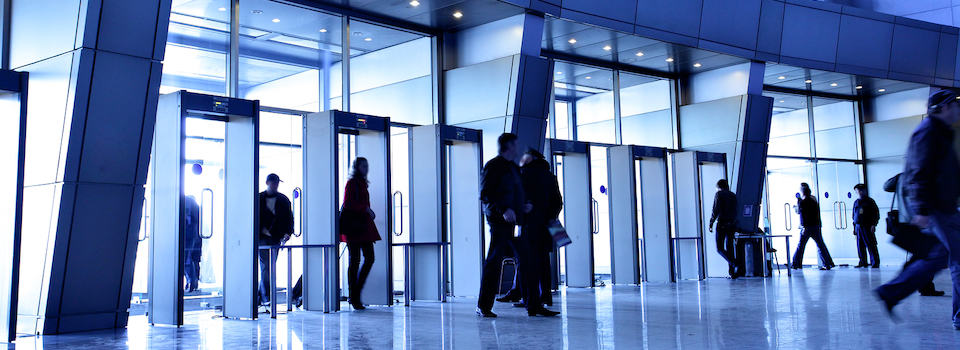Use this Report Card to help you evaluate your readiness for an event at your church. Score 0 for not prepared to a 10 for fully prepared.
1. Is there a standardized campus-wide warning system?
In the event of an active shooter, is there a documented strategic process that puts the building on lockdown mode and warns key staff, volunteers or members of an active shooter?
There are multiple ways to do this—the key is that there is a system in place and that your team knows what it is. You can upgrade your fire alarm system to include a voice evacuation system for mass notification throughout the building.
2. Do key environments have single points of access?
In the event of an active shooter scenario, each ministry needs the ability to quickly lock down and secure the environment until help arrives. This is most easily and promptly accomplished when there is only one main entry point to each environment.
For example, your children’s ministry environments should be able to barricade a single point of entry to secure and protect children and workers. A children’s ministry whose classrooms are littered down a long corridor with multiple points of entry may not be able to quickly and securely lock down the entire environment.
3. Is your First Impressions Team trained to look and respond to potential threats?
Each volunteer on your First Impressions Team, from the barista to those handing out programs, should be fearlessly on the lookout and know how to respond to potential threats to the church body. The parking team, as the front line of defense, needs the ability to alert the security team if something feels a little out of whack.
The door greeters need to know how to respond if they notice a guest wearing tactical gear. The more eyes you have scanning attendees entering the building, the more likely you will be able to divert a threat.
4. Is your entry sequence multi-layered?
Churches without lobbies, or with small or straightforward entry sequences, create high levels of vulnerability. Though you want your environments to be welcoming, require those attending to travel through several environments before reaching the auditorium or kids’ space.
Multi-layered entry will help deter potential threats. That is why in order to get to a bank’s vault, a potential thief has to penetrate several layers of security to hit the jackpot.
5. Are there adequate places to hide?
Most active shooter training includes a run-hide-fight strategy. It is critical that attendees have places to hide. Because many lobbies and auditoriums are designed to maximize open space, there are often not many places to hide.
Evaluate your public areas to determine if there are adequate hiding spaces. This can include half walls, counters, furniture and closets.
6. Are there multiple escape routes?
Most building codes require minimum means of egress. In the event of a slow-moving fire in the building, that minimum number may be adequate. In an active shooter scenario, when seconds matter, it is wise to have additional exits to handle panicked victims as they escape. Does your building have adequate exits for immediate evacuation?
7. Are all emergency exit doors alarmed?
With the addition of extra exit doors, there is the possibility that a door might get propped open. That open door would allow for troublemakers to enter unnoticed. Exit-only doors should be alarmed and have panic hardware only on the inside of the door.
8. Does your building have pedestrian protection?
Have you seen those red concrete spheres outside of each Target store? You may think they were the attempt of some New York designer to add a splash of color to the sidewalk. Those bollards are strategically placed to protect pedestrians and prevent large trucks from crashing into the lobby. Church lobbies and sidewalks are exposed without the protection of bollards, large planters or red concrete balls
9. Does your church have gunfire detection sensors?
Much like a fire alarm, churches are installing gunfire detection sensors. These high-tech sensors immediately alert local authorities when a gun is fired in or around your building. The sensors are so sophisticated that they can differentiate between loud noises and gunfire. Many even report the type of gun that was fired. When seconds matter, gunfire sensors could be the difference between life and death.
10. Does your team regularly pray for protection from potential threats?
Has the safety and security of your church members become an ongoing matter of prayer for your staff and leaders?











